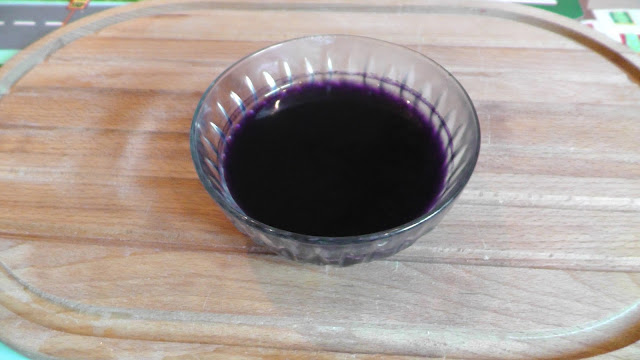As you can see it's a lovely purple colour. This can be used to test the pH of a material. pH is a numerical scale to measure whether something is acid or alkaline. First I mixed it with vinegar - which is acidic - and washing up liquid - which is alkaline - to find out what colour it would go.
|
|
|
 |  |
So acidic things go dark pink when mixed with cabbage juice and alkali things go greeny-blue. If it stays purple it is neutral - not really acid or alkali. I tested a few other things in my kitchen.
So next time to have to eat red cabbage you can try this yourself. You can also use it to test the pH of the soil in your garden. Some plants grow better in either acid or alkali soils.








